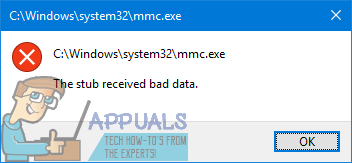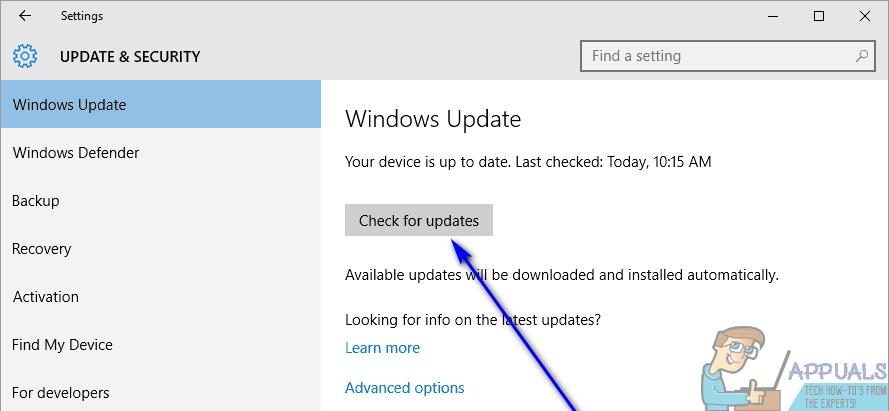4 Ways to Solve ‘The stub received bad data’ Error
Windows 10 users have often complained of a problem where certain actions (such as trying to run a specific program or open a Windows utility such as the Services manager) result in failure and an error message containing the following phrase on the screen:

“The stub received bad data”
The error message can be accompanied by an error code or even a statement that gives a bit more information as to exactly what the affected computer failed to do, or might just be limited to the phrase described above. While not as common, this problem has also been seen on older versions of the Windows Operating System so Windows 10 users are not alone in the struggle against this problem.
In most cases, simply dismissing this error message and then trying once again to launch the affected app or utility results in it running successfully. However, there is no denying how annoying this error message can be when it pops up. While this issue is a pretty bothersome one, it is not an unfixable one. The following are some of the most effective solutions that you can use to try and get rid of this error message and successfully launch the affected program or utility:
Solution 1: Run an SFC scan
The System File Checker utility is designed to analyze computers running on the Windows Operating System for corrupt or otherwise damaged system files. In addition to sniffing out system files that are corrupt or otherwise damaged, an SFC scan is also capable of repairing the damage they have endured. In addition, if the System File Checker cannot perform repairs, in any case, it simply replaces the damaged system file with an undamaged, cached version of the file. Running an SFC scan is an excellent place to start when dealing with “The stub received bad data” error messages. To run an SFC scan on a Windows 10 computer, simply follow this guide.
Solution 2: Make sure you have all the latest Windows Updates installed
This problem can often be caused by something that a Windows Update you downloaded and installed on to your computer broke. Thankfully, whenever a Windows Update breaks something for a significant number of users, Microsoft promptly ships out a fix for whatever it previously broke in a new Windows Update. That being the case, you should make sure you have all the latest Windows Updates installed on your computer. To do so:
- Open the Start Menu.
- Click on Settings.
- Click on Update & security.
- Click on Windows Update in the left pane.
- In the right pane, click on Check for updates under the Windows Update section.

- Wait for Windows to check for updates available for your computer. This might take some time, so be patient.
- If Windows does not find any updates for your computer, simply try out a different solution. If Windows finds updates available for your computer, download and install every single one, restart your computer once done and check to see if doing so fixes the problem when it boots up.
Solution 3: Uninstall any and all unused programs that have their own services
If there are more services installed on your computer than the size limit of the Services manager’s buffer allows, your computer might contract this issue. If that happens, the recommended course of action is to uninstall any and all third-party programs that have their own services installed on your computer and that you don’t use or use very rarely. To do so, simply:
- Open the Start Menu.
- Search for “add or remove programs“.
- Click on the search result titled Add or remove programs.
- Look through the list of programs installed on your computer, locate ones that you don’t use or use very rarely and that have their own services installed on your computer, and one by one, right-click on them, click on Uninstall and follow the onscreen instructions to uninstall them.
Once done, restart your computer and check to see if this solution got the job done when the computer boots up.
Solution 4: Clean install Windows 10 from scratch
If absolutely none of the solutions listed and described above have worked for you and you simply cannot live with the annoying existence that is this error message, fear not – you can still clean install Windows 10 from scratch. While clean installing Windows 10 from scratch will get rid of all your applications and data (it is recommended that you back up anything you don’t want to lose before proceeding), it is a highly effective solution to this problem. You can use this guide to clean install Windows 10 from scratch if you do not know how to.